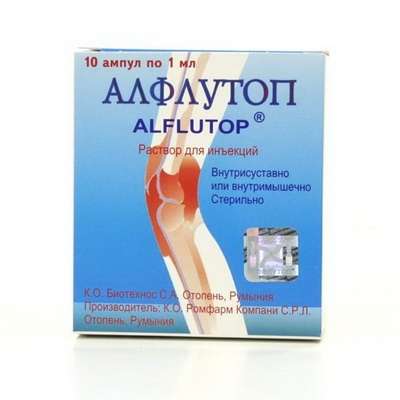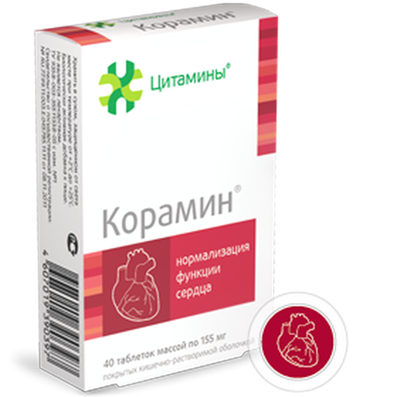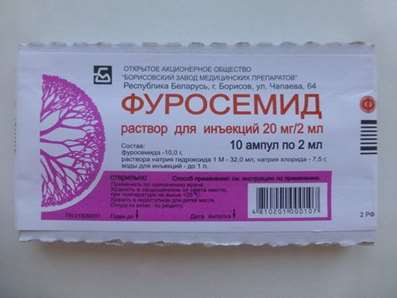Mildronate: Renaissance of the drugs or fortified positions in clinical practice?
10 Oct 2016
Recently completed, randomized, international, multicenter, double-blind, placebo-controlled study of Mildronate, which was conducted in 37 study centers in Latvia, Lithuania, Russia and Ukraine. A clinical study was devoted to the study of the influence of Mildronate on exercise tolerance in patients with angina. A study carried out in strict accordance with the standards of Good Clinical Practice (GCP). Until now, it is this - the international multi-center study - did not have enough preparation Mildronate in disputes with opponents.
Famous Latvian scientist, academician Ivars Kalvins, about to complete the study noted: "As the inventor of the drug, I have always been convinced of the therapeutic efficacy of Mildronate that confirmed by clinical practice, and research for many years. The results concluded an international clinical trial once more approve effectiveness and the high reliability of Mildronate in the treatment of angina in combination with standard therapy. " The results of this study are published, and we already know the data on the effectiveness of Mildronate (Meldonium) to patients with angina pectoris. The purpose of this article - to provide data on the mechanism of action and clinical efficacy of Mildronate in various diseases.
Problems of angina pectoris treatment
The problem of increasing the effectiveness of the treatment of chronic diseases of the cardiovascular system, and especially coronary heart disease, is very important. Traditional methods of treatment of stable angina include aspirin (level of evidence IA) beta-adrenoblockators (IB), calcium antagonists (IB), long-acting nitrates (IB), and cholesterol-lowering drugs (statins, fibrates) (IA). However, use of such a universally accepted in this pathology of drugs does not solve the problem of angina. In a study of ATP Survey, which examined the results of the pharmacological treatment of angina, it was shown that the appointment of a patient with angina modern combination therapy does not lead to the complete elimination of angina attacks . Despite the use of each patient on average 4.9 ± 1.6 Cardiac preparation, was recorded on average 5 angina and receiving 5 nitroglycerin tablets per week.
The problem is that when the full effect of a supplemental assignment hemodynamic drugs with a similar mode of action does not improve the result . Specially TIBET international research has shown that if a patient takes one drug or a combination of two drugs hemodynamic actions, the results of treatment have no significant difference.
"Alphabet" modern concept of medical treatment of ischemic heart disease in accordance with the recommendations of the European Society of Cardiology includes the following items:
A (Aspirin and Antianginal therapy) - aspirin and antianginal therapy;
B (Beta-blockers and Blood pressure) - badrenoblokatorov and normalization of blood pressure;
C (Cigarette smoking and Cholesterol) - quitting smoking and lowering cholesterol concentration (regardless of baseline);
D (Diet and Diabetes) - Diet and treatment of diabetes (if present);
E (Education and Exercice) - an educational program and exercise.
After that, in the present "alphabet" of the recommendations indicated by the letter «F» with a question mark. Who or what can qualify for the position «F» and whether this "alphabet" in continuing need? Apparently, yes. As of today the results of the treatment of angina does not satisfy either clinicians or patients.
Perhaps the position of the «F» can apply offsets metabolism. Indeed, in recent years in the cardiology practice more often expressed opinion on the need for correction of metabolism. Modern strategy of treatment of heart disease aims to improve blood flow in the coronary vessels, a decrease in myocardial oxygen consumption and more rational use of reserves (metabolism correction).
Recommendations for the treatment of chronic heart failure (CHF), which include the blockade renin-angiotensin-aldosterone system (RAAS) and the sympathetic nervous system, increased compensatory mechanisms in acute heart failure, treatment of opportunistic diseases, the use of devices and mechanical support, surgical reconstruction of the heart, pharmacogenomics, and usually complemented metabolism correction.
POWER SUPPLY OF MYOCARDIUM
Before we understand the role of Mildronate toh heart disease, it is necessary to consider the problem of power supply of the myocardium. The heart is the "omnivorous" body, because it uses a lot of different substrates for energy production: fatty acids, glucose, lactate, ketones, amino acids.
In a healthy organism, when no oxygen deficiency, myocardial energy in form of ATP formed from fatty acids and glucose. At the signal the nervous system in accordance with the needs of the mobilization of fatty acids occurs by activated carnitine their transport across the mitochondrial membrane is here supplied in a sufficient amount of oxygen. The mitochondrial acetyl coenzyme A is formed as a result betaokisleniya fatty acids, which enters the Kreb cycle where ATP is synthesized. Another source of energy education is a way of aerobic or anaerobic oxidation of glucose.
When cells experiencing a shortage of oxygen, that is in conditions of hypoxia, myocardial metabolism varies. Short-chain and long-chain fatty acids into the mitochondria come, but for the oxidation of oxygen in the cell is lacking. As a result, oxidized in cardiomyocytes accumulate oxidized active form of fatty acids in the form of acylcarnitine and acykilcoenzime A. These metabolites capable of damaging cell membranes and block the delivery of ATP cell organelles. As a result, the cell may die.
Incompletely oxidized products of long-chain fatty acids - acylcarnitine and atsilkoenzim A - blocking Ca2 + ATPase of the sarcoplasmic reticulum (calcium pump), Na +, K + ATPase sarcolemma (sodium and potassium pump), adeninnukleotidtranslokazu (ATFnasos). Accumulation of fatty acid in oxidized conditions of oxygen deficiency blocks glucose oxidation in the case of myocardial ischemic reperfusion. The long chain acylcarnitine can cause contracture ischemic myocardium. The intensive oxidation of fatty acids in the myocardium in the post-ischemic period reduces the possibility of heart function.
In acute stress, including pain, myocardial ischemia, there are significant changes in the content of biomolecules in blood. Thus, in the blood level of 36-72 hours increases norepinephrine and epinephrine, free fatty acids, for 3 hours or more - and glucose steroid hormones. At the same time increases the cellular uptake and intensity of the oxidation of free fatty acids, which entails an increase in oxygen consumption. At the same time capture cardiomyocytes glucose, lactate and pyruvate decreases. Reduced rate of conversion of pyruvate into acetyl coenzyme A, and its subsequent oxidation in the Krebs cycle. All this leads to a decrease in production macroergs.
Ischemia all available methods must limit the release of fatty acids in the blood and their penetration into the mitochondria, thereby reducing the rate of oxidation of free fatty acids. But it is necessary for the survival of cardiomyocytes at the same time to ensure the supply of high amounts of glucose into the cells to activate its oxidation and ensure the involvement of pyruvate in the Krebs cycle.
In patients with diabetes mellitus, there is another problem in supplying energy to the myocardium. The adequate supply of oxygen conditions cardiomyocytes receive energy from fatty acids and 60-80% 20-40% - glucose. In patients with diabetes is due to the violation of tissue glucose uptake processes myocardial energy supply occurs mainly by oxidation of free fatty acids. This mechanism of energy sometimes reaches 90%.
Thus, in terms of myocardial ischemia because of lack of oxygen, on the one hand, the accumulated oxidized products of fatty acids (and acylcarnitine atsilKoA) is blocked from transport ATP mitochondria occurs detergentsiya cell membranes, ionic composition changes, evolving myocardial ischemic contracture. On the other hand, in the conditions of hypoxia glucose oxidation occurs until only lactate acidosis develops, electrical instability infarction, arrhythmias arise.
In such circumstances, it is important to complement the treatment of CHD cyto-protector, which are the partial (partial) fatty acid oxidation inhibitors and activators of transport and glucose oxidation.
Modern metabolic therapy
All preparations of metabolic therapy in cardiology can be divided into two groups: metabolic therapy preparations and preparations for the correction of metabolism. Under metabolic therapy administering to understand the metabolic substrates (vitamins, enzymes, amino acids, glucose, potassium, insulin, ATP, etc.) required for cellular activity.
Correction of metabolism is an introduction into the body of chemicals that are not themselves substrates, but correcting the individual metabolic processes (statins, inhibitors betaokisleniya partial fatty acid thiotriazoline et al.). According to modern concepts ideal metabolic drug should prevent the formation in the cells of a large amount of oxidized fatty acids (to prevent damage to cell membranes), enhance delivery of pyruvate in cells or its formation of lactate (activation of glycolysis), to be able to inactivate reactive oxygen species (prevention of oxidative stress). The most ideal metabolic drug can be called well-known Mildronate (3 (2,2,2 trimetilgidrazine propionate) as a greater or lesser extent it affects all three components of the abovementioned metabolic processes.
Mildronate – Mechanism of Action
Mildronate belongs to a group of so-called cytoprotectors / antihypoxants providing protection and power of various cells of the body in conditions of ischemia and increased payload. The drug is a competitive inhibitor gamma-butyrobetaine hydroxylase enzyme that catalyzes the conversion process gamma-butyrobetaine carnitine. Mildronate carnitine is not a drug, it only limits the rate of biosynthesis of carnitine gamma-butyrobetaine of its predecessor. Carnitine, as a kind of conveyor, facilitates the penetration of fatty acids into the cell, where the process of oxydation. Under conditions of sufficient oxygen supply of fatty acids into the mitochondria received, energy-rich compounds formed in the form of ATP. Influenced by Mildronate limited transport across mitochondrial membranes only long-chain fatty acids, whereas short chain may freely enter the mitochondria and oxidised there.
Gamma-butyrobetaine formed many small carnitine, resulting in less long chain fatty acids into the mitochondria is supplied. It has no effect on the metabolism of short chain fatty acids. Action Mildronate does not depend on the concentration of free fatty acids in the blood. Other partial fatty acid oxidation inhibitors are not able to prevent the accumulation of mitochondria activated forms of long chain fatty acids - atsilKoA and acylcarnitine and adverse effects of these metabolites on the ATP and transport the cell membrane.
The processes of fatty acid and glucose oxidation are linked and are in a reciprocal relationship: if inhibited fatty acid oxidation, increases glucose uptake. In conditions of oxygen deficiency, which is observed in patients with coronary artery disease, the cell is advantageous to use glucose oxidation than the fatty acid, since this process requires a smaller amount of oxygen.
Thus Mildronate partially slowing the transport of fatty acids, reduces its oxidation, thereby reducing the need for oxygen in cells. The drug prevents the accumulation of toxic intermediate metabolites (acylcarnitine and atsilKoA) and they cause cell damage.
Reducing the rate of fatty acid oxidation includes alternative energy production system - the oxidation of glucose, which is 12% more efficient use of oxygen for ATP synthesis. And this mechanism also defines the cytoprotective effect on Mildronate ischemic cells. The result is increased stability of cardiomyocytes to lack of oxygen, more rational use of energy resources, modified the way of energy production in the conditions of oxygen starvation, which helps the heart to survive in extreme conditions.
Mildronate (Meldonium) stimulates aerobic glycolysis, which is not accompanied by the accumulation of lactate in the tissues as pyruvate system further provides rapid oxidation of glucose. Mildronate restores ATP transport to the cell organelles. These results suggest Meldonium to a certain extent the pharmacological preconditioning means capable of optimizing the oxidation of glucose.
In the conditions of hypoxia processes of ischemic myocardial injury compounded under the influence of an increased release of catecholamines by physical and emotional stress, which activate the free radical oxidation of fatty acids to the accumulation of intermediate products that are dangerous to the body (atsilKoA, acylcarnitine). They damage cell membranes and inhibit the delivery of ATP to mitochondria organelles cells. This results in cell apoptosis, even if ATP stores is sufficient for them to operate for some time. Which determines the intensity of the use of long-chain fatty acids to prevent this process, you must either improve their blood circulation, or the synthesis of carnitine as the main limiting factor.
The main difference of Mildronate from other medicines used to correct metabolism, is the presence of Mildronate additional therapeutic effects which open broad opportunities for its application.
Esters of Mildronate and Gamma-butyrobetaine are structural analogues of acetylcholine. Mildronate stimulates acetylcholine receptors, causing the induction of synthesis of nitric oxide (NO). As a result of increased synthesis of nitric oxide (NO). NO molecule of guanylate cyclase mechanism reduces intracellular calcium. This leads to the relaxation of vascular smooth muscle cells, improve microcirculation, improve endothelial function. All these processes are very important in the pathology of the cardiovascular system, especially in the early stages of the disease.
Acetylcholine is a major neurotransmitter in not only the neuromuscular and autonomic neurotransmission, and in interneuronal connections of the central nervous system. With the decline of its concentration is associated pathogenesis of degenerative diseases (Alzheimer's disease, and others.). The development of many other cognitive and motor disorders (paresis, ataxia, hyperkinesis, etc.) Is also associated with a deficiency of acetylcholine in the neural synapse transmission. Acting as an activator on acetylcholine receptors, Mildronate is able to improve neuro plastic properties of the brain, which can serve as the basis for many cerebral clinical effects. Meldonium also improves cerebral blood flow.
Mildronate is capable of activating genes responsible for protecting the body from stress. Activation of antistress same genes, the ability to produce an additional amount of energy compounds increase efficiency, allow the body to better cope with the increased loads. Due to a similar mechanism of Mildronate action is indispensable for increased mental stress, work in extreme situations. To increase the efficiency high-class athletes take Mildronate, students in preparation for exams. By improving cerebral blood flow Mildronate eliminates functional disturbances of the nervous system in patients with chronic alcoholism, reduces symptoms of withdrawal syndrome and intoxication.
Thus, the mechanism of action of therapeutic and protective Mildronate is its impact on metabolic energy chain that provides a full functioning of cells under conditions of oxygen shortage. These effects are achieved by reducing fatty acid oxidation rate in ischemia (energy saving), the activation of glycolysis for energy production, pharmaceutical training (a precondition, the inclusion of compensatory mechanisms - training through the suppression of the synthesis of carnitine), the induction of the biosynthesis of nitric oxide, vasoactive effects by reducing peripheral resistance vessels.
CLINICAL EFFICACY of Mildronate
The most studied clinical efficacy of Mildronate to coronary artery disease and chronic heart failure. Mildronate improves exercise tolerance and quality of life of patients. It is noted the positive dynamics of indicators from structurally functional of heart.
Application of Mildronate preoperative coronary artery bypass graft and percutaneous transluminal coronary angioplasty contributes to limiting the development of postoperative myocardial dysfunction caused by the phenomenon of reperfusion and "stunned" myocardium. At the same time against the backdrop of improving the overall treatment and local myocardial contractility before surgery followed by significant improvement after revascularization.
The combined use in the treatment of patients with arterial hypertension Mildronate enalapril and contributes to a more rapid normalization of free radical oxidation, correction of endothelial dysfunction and a daily profile of blood pressure, improves the morphological and functional state of the left ventricle [20]. Use in combination with enalapril Trimetazidine does not increase the efficacy of antihypertensive therapy. Perhaps this is because not Trimetazidine has antioxidant properties. Effect of combination therapy Mildronate and enalapril on the state of the myocardium and intracardiac hemodynamics was maintained for 2 months after discontinuation cytoprotector.
Mildronate at a dose of 1000 mg (10 ml of 10% solution) intravenously for 20 days, has a statistically significant effect on the severity of neurological disorders in patients with ischemic stroke in the acute stage of its development. In this case, the biochemical basis for the therapeutic actions of Mildronate is its antioxidant activity. Mildronats significantly reduces oxidative damage lipoprotein structures, restores the activity of endogenous antioxidant system.
In the early recovery period of ischemic stroke parenteral administration of Mildronate contributes to the overall activity and attention. In patients with increased tempo of convertibility assignments, improve memory. The results of this study open up the prospect of application of Mildronate as a neuroprotectant in disorders of cerebral circulation.
Conducted neuropsychological studies suggest that Mildronate therapy has a definite positive impact on mental processes in patients with circulatory encephalopathy. Excellent, good and satisfactory results of such treatment were observed in 69.7% of patients with circulatory encephalopathy. The greatest effect was observed in patients with mood instability, emotionally violation scope, memory and ability to concentrate.
The majority of patients with circulatory encephalopathy during treatment of Meldonium improvement occurs by both subjective and objective neurological symptoms, with the most precise dynamics undergo cochle-vestibular, asthenic neurotic diseases and cephalgic syndromes and diseases. Confirmed by experimental data on the antioxidant effect of Mildronate, which is realized by increasing endogenous antioxidant status of the organism.
The clinical effect of Mildronate appears to 4-5 days of therapy, it is most pronounced in the day of 10mu, and continues to grow until the 6th week of treatment. After discontinuation of the drug is observed aftereffect that persists for several weeks. Mildronate enhances the action of ACE inhibitors, nitroglycerin, calcium antagonists, beta blockers and other antihypertensive drugs, potentiates the action of cardiac glycosides.
Given the mechanism of action and biological effects of the drug indications for use of Mildronate are ischemic heart disease (stable and unstable angina, myocardial infarction, myocardial period, chronic heart failure), reduced working capacity, physical stress, including the athletes, cardialgia on background of climacteric disorders, the syndrome abstinence and intoxication in chronic alcoholism, acute disorders of blood circulation in the retina, acute and chronic circulatory disorders of the brain (cerebral strokes and chronic cerebrovascular insufficiency), disorders of blood circulation in the lower extremities.
Thus, if you go back to the title of this article, it can be argued that Mildronate never lost its relevance, its effectiveness is confirmed by real clinical practice in millions of sales packs of the drug for many years. Long-term popularity of Mildronate among patients and doctors demonstrates that the drug is effective in many diseases of the cardiovascular system and not only. The positive results of an international study concluded, in our view, only strengthened the position of Mildronate (meldonium) as a medicament for the correction of metabolism, and primarily as a drug shown in myocardial hypoxia. Today we are witnessing of Mildronate Renaissance, and observe the strengthening of its position in the pharmaceutical market and in clinical practice.

 Cart
Cart





